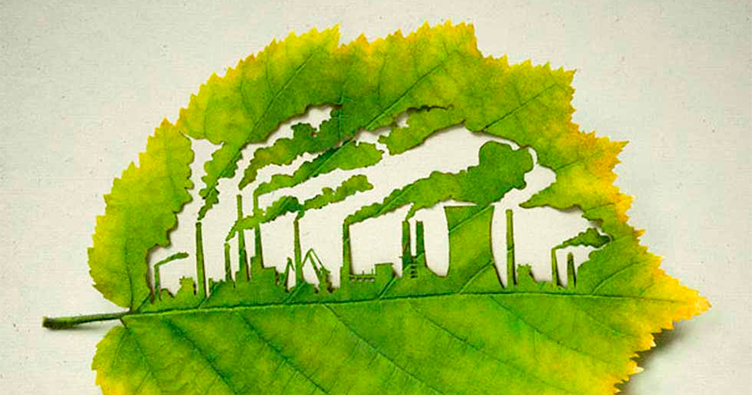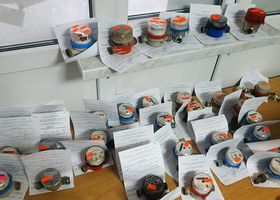In Ukraine, there are no standards for key stages of Environment Impact Assessment (EIA) – DiXi Group
The DiXi Group Analytical Center has decided to investigate the implementation of the EIA procedure in Ukraine after two years of operation of the relevant law
The Environmental Impact Assessment (EIA) procedure in Ukraine has a number of key issues, among which a significant number of EIA procedures to be carried out by an extracting company, the lack of industry standards and criteria for key stages of the EIA procedure as well as the issue of organizing appropriate conditions for civil society participation in the EIA procedure.
This is stated in the blog of DiXi Group expert Olha Polunina.
“One of the problems is a significant number of EIA procedures that an extracting company has to carry out, especially at the stage of field development. For example, according to the sample of the Unified Registry of EIA, in 46% of the cases, the EIA procedures conducted by “Ukrgazvydobuvannia” are related to wells drilling (including the cases when it may be separate EIAs for each well or for a well complex), another 8% of procedures are related to various accompanying types of activity. This is more than a half of the total number,” told the expert.
At the same time, for one field, an extracting company may, simultaneously or at different stages, carry out EIA procedures for extraction/ continuation of extraction of natural resources, construction of wells/well, accompanying types of activities, etc.
“To solve this problem, it is necessary to analyse which EIA procedures may be consolidated for the field project as a whole. In this case, companies will have a lower regulatory burden, and the public will have more information, as they will know about the whole project (but not one well only), not will be lost in many advertisements, reports and hearings,” Polunina believes.
Another problem for subsoil users is the lack of industry standards and criteria for key stages of the EIA procedure (report, conclusion).
“The law stipulates that regulatory and guidance documentation and standardization of the preparation of the EIA report shall be provided by the Ministry of Energy and Environment Protection. Currently, the implementation of the Law in this part is carried out by providing advice to economic entities by employees of the Ministry of Energy and Environment Protection. The lack of standards and criteria, by which the essential impact on the environment from extracting activities is defined, creates a field for manipulations for all the parties involved in the EIA procedure: both for the company and the permission issuing authority. A possible solution could be the introduction of industry standards to develop a report and conclusion in the field of mineral resources extraction (according to different types of mineral resources and different types of activities),” the expert said.
In her opinion, the lack of requirements for individuals/companies preparing the draft EIA report gives rise to some misunderstandings in this area.
“These reports are complex in their structure and are to be prepared by qualified professionals; but currently, no qualification requirements for individuals or companies preparing EIA reports have been established in Ukraine. It should be noted that Directive 2001/42/EC on the assessment of the effects of certain plant and programs on the environment and Directive 2011/92/EC on the assessment of the effects of certain public and private projects on the environment do not provide for such requirements, so EU member states have independently chosen measures to ensure the quality of EIA reports. For instance, Cyprus, Malta, Romania and Croatia have introduced mandatory accreditation of persons preparing EIA reports, and in Denmark, the authorized public authority for EIA has been designated to be responsible for preparation of EIA reports,” Polunina pointed out.
With regard to international experience, in Canada, there is no requirement for certification of persons preparing EIA reports. At the same time, Canadian universities offer educational programs on the assessment of the impact on the environment – both on the level of higher education and on the level of postgraduate education as well as certification programs. Besides, Impact Assessment Agency of Canada offers two-day training programs for all interested people.
“Ukraine may choose a certification or other competency verification tool for individuals/ companies preparing draft EIA reports. It is important that extracting companies should know who they can contact, and the Ministry of Energy and Environment Protection (or other conclusion issuing authority) could verify the qualification of an EIA report developer,” the expert emphasized.
She is convinced that the issue of appropriate conditions for civil society participation in the EIA procedure also needs attention.
“There is still a high proportion of public hearings that are considered to have taken place in the absence of representatives of the public. Thus, out of 373 cases related to extracting activities (sampling from the EIA Register as of 28 December 2019), in 136 cases, representatives of the public did not appear at the hearings. At the same time, in all these cases, the procedure of conducting the EIA moved further. The ways to solve this problem are to comply with the requirements of the Law “On Assessment of Impact on the Environment”, which provides for the creation of appropriate conditions for public participation, control over implementation of the Law by the state and public sector and holding educational activities,” Polunina pointed out.









